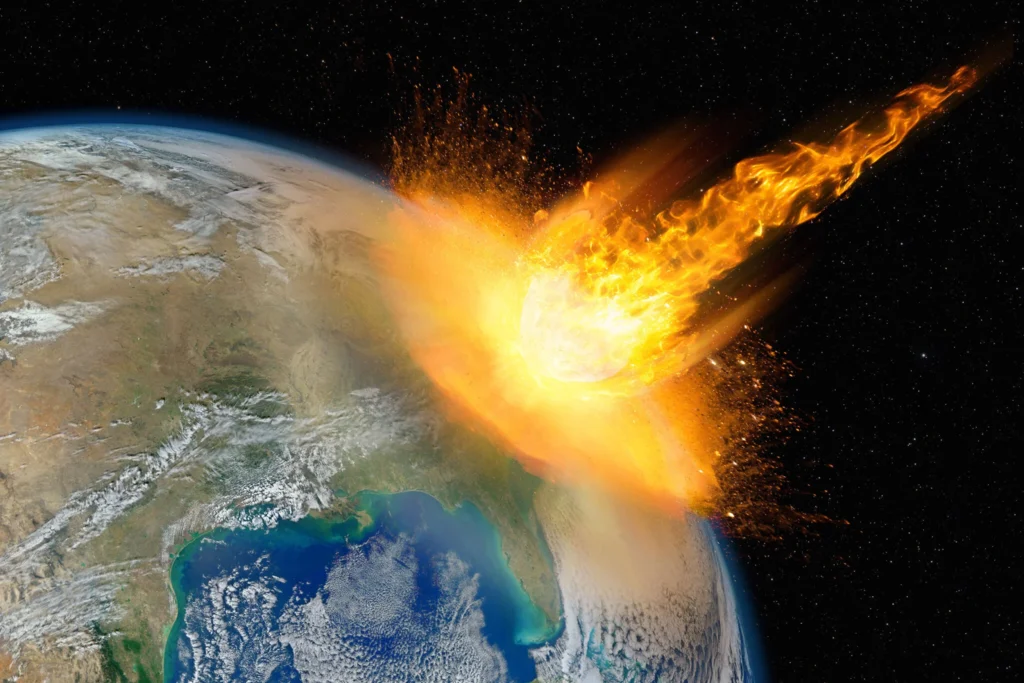A group of scientists reported the discovery of a boomerang meteorite: a rock that was knocked off the surface of the Earth, spent some time in space, and then fell back to our planet. If the discovery is confirmed, it will be the first time a meteorite has been found that has returned to Earth.
An unusual meteorite from the Sahara Desert
In 2018, a dark reddish-brown stone was found in the Sahara Desert in Morocco. The researchers who examined it came to the conclusion that it was a meteorite. The find received the designation NWA 13188.

When the scientists conducted a detailed laboratory analysis of the space guest, they were in for a surprise. Tests have shown that NWA 13188 has the same chemical analysis as volcanic rocks on Earth. At the same time, the concentration of beryllium-3, helium-10 and neon-21 isotopes in the rock turned out to be higher than in any rock on Earth, but lower than in other meteorites. This may be explained by the consequences of the interaction of NWA 13188 with high-energy cosmic rays, which confirms its presence outside our planet. According to researchers, the rock could spend in orbit around the Earth from two thousand to several tens of thousands of years before entering its atmosphere.
How to throw a rock into space
How exactly did NWA 13188 end up in space? The most likely explanation was that it was knocked off the earth’s surface as a result of the fall of some large body. The energy released at the same time turned out to be enough for the knocked-out debris to gain the first or even the second cosmic velocity. This is a very real scenario. To date, scientists have discovered a significant number of meteorites that are of lunar and Martian origin (as proved by their isotopic analysis). In turn, the debris knocked out from the Earth’s surface probably fell on other bodies of the Solar System. Some scientists believe that through such a mechanism, life can move between planets.

An alternative explanation is that NWA 13188 appeared in space as a result of an eruption. Theoretically, this is possible, but only in the case of a mega-eruption, which has never happened during the entire existence of human civilization. For example, the height of the ejection during the eruption of the Hunga volcano last year was only 58 km; this is significantly below the boundary of the earth’s atmosphere. But we are talking about the most powerful eruption since Krakatoa.
Doubts about the nature of the boomerang meteorite
At the same time, it is worth noting that although the team of researchers who studied NWA 13188 does not doubt its origin, other scientists maintain a more cautious approach and recommend obtaining additional evidence. It could be an analysis of the age of the rock NWA 13188 has been classified as achondrite. Typical meteorites of this class are 4.5 billion years old, which coincides with the age of the Solar System. However, if NWA 13188 is an earth rock, then it should be much younger.

Another serious problem is the lack of a fresh large impact crater on Earth to fit into the chronology proposed by scientists. It is estimated that to knock out a fragment in space, it would take a body with a diameter of about a kilometer. Its fall would have left behind a twenty-kilometer crater. But among the fifty known impact formations of the required size, there is not one which is less than a million years old, while according to scientists, NWA 13188 was knocked out about 10 thousand years ago. So, apparently, we are still waiting for discussions about the origin of the boomerang meteorite.
According to https://www.space.com
Follow us on Twitter to get the most interesting space news in time
https://twitter.com/ust_magazine

